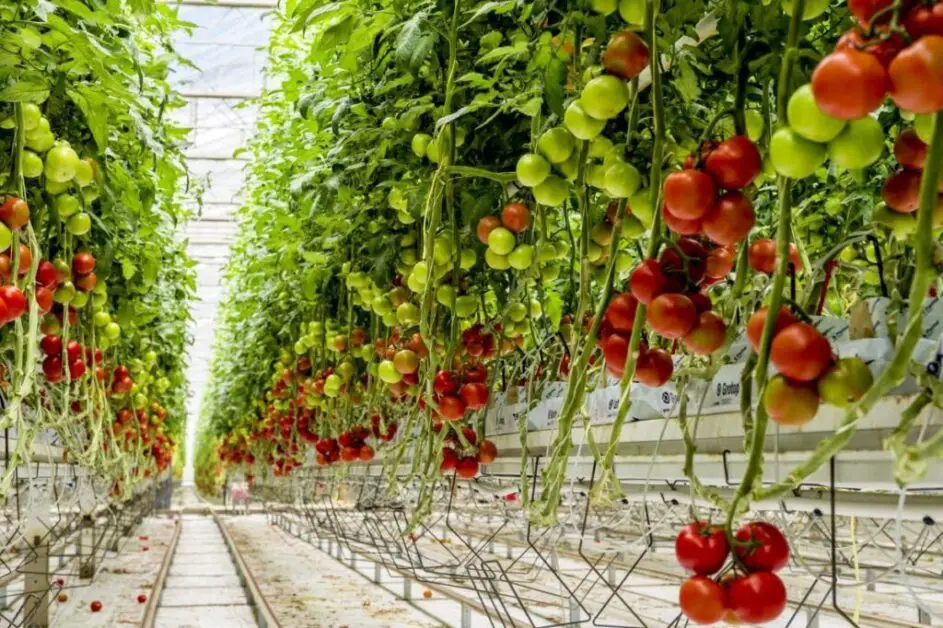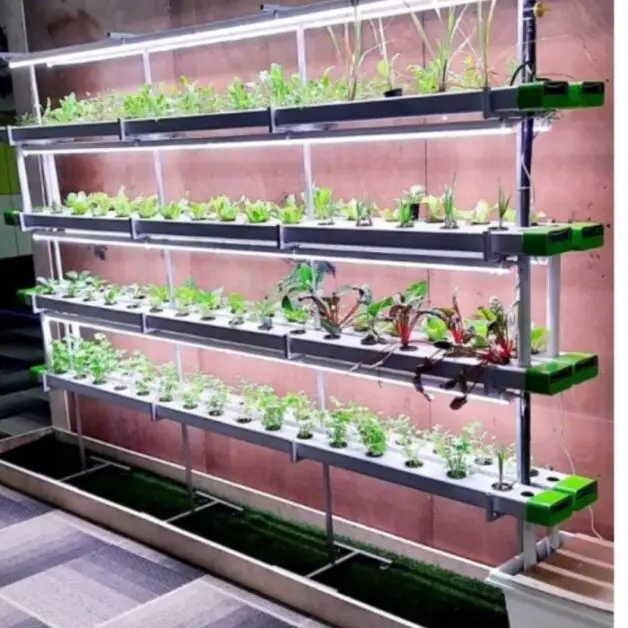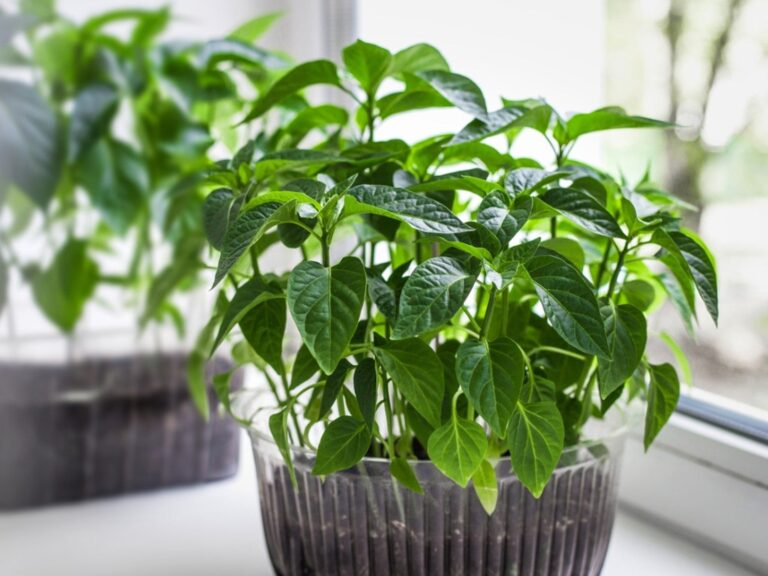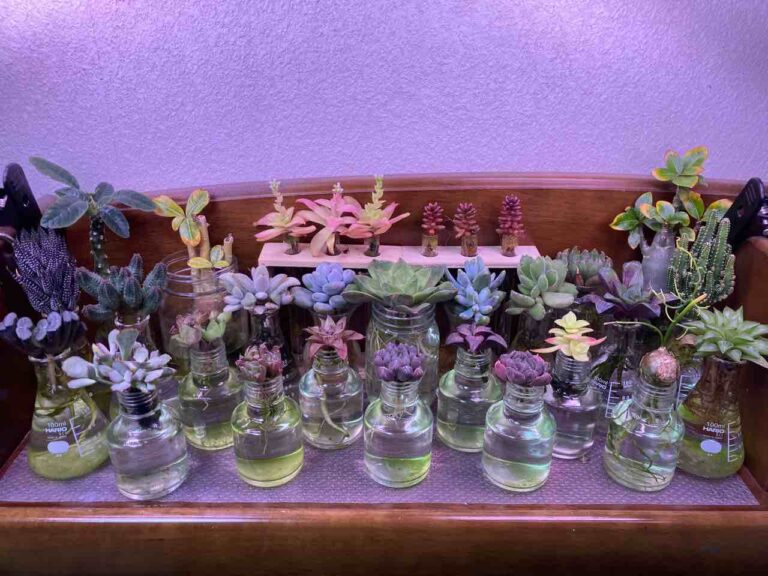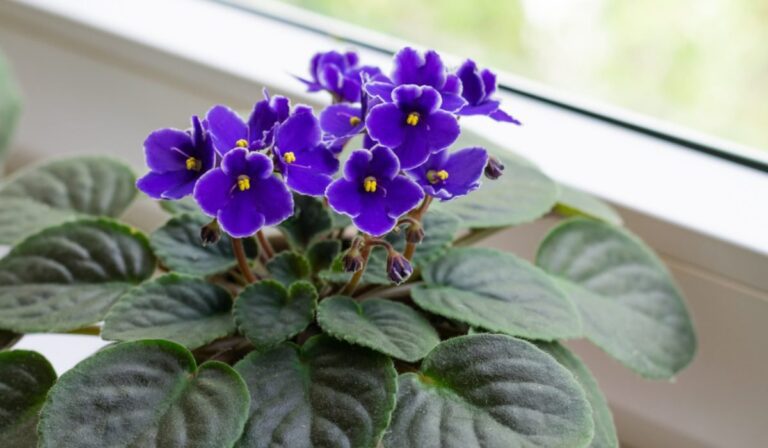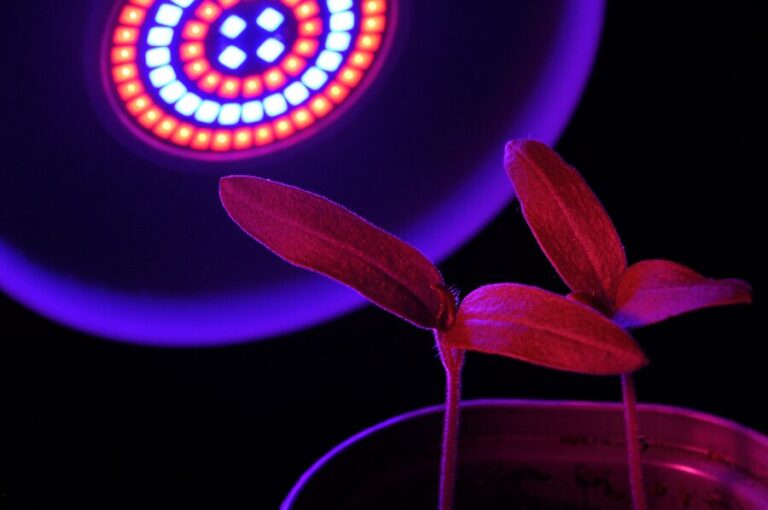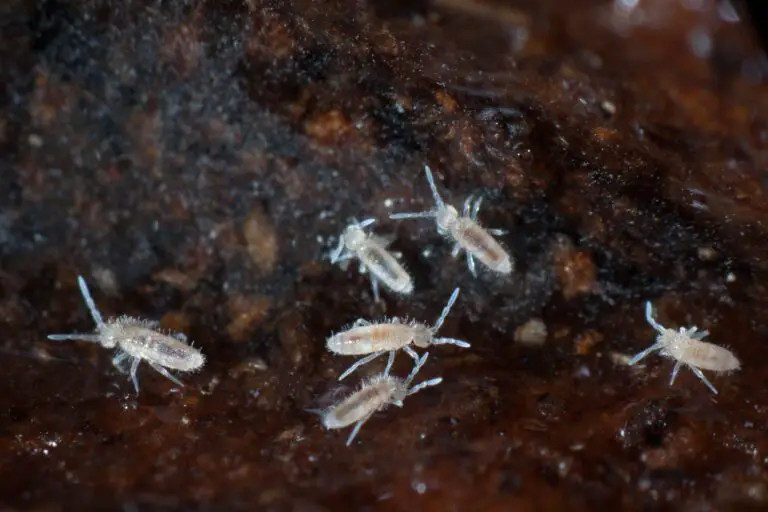Growing Tomatoes Hydroponically: Tips and Tricks
Did you know you can grow delicious, juicy tomatoes without soil? Welcome to the world of hydroponic gardening! Whether you’re a seasoned green thumb or a curious beginner, diving into hydroponics opens up a world of possibilities. In this blog, we’ll explore the ins and outs of growing tomatoes hydroponically, sharing insider tips and tricks along the way.
From selecting the right nutrient solution to optimizing light and temperature conditions, we’ve got you covered. By the end of this read, you’ll be armed with the knowledge and confidence to embark on your own hydroponic tomato-growing adventure. Let’s dive in and cultivate those vibrant, flavorful tomatoes together!
Table of Contents
Understanding the Basics of Hydroponic Tomato Cultivation
Hydroponic tomato cultivation is a modern and efficient method of growing tomatoes without soil, offering gardeners the opportunity to produce high-quality tomatoes all year round. By providing plants with the exact nutrients they need in a controlled environment, hydroponics maximizes growth and yields, while minimizing water usage and pest problems.
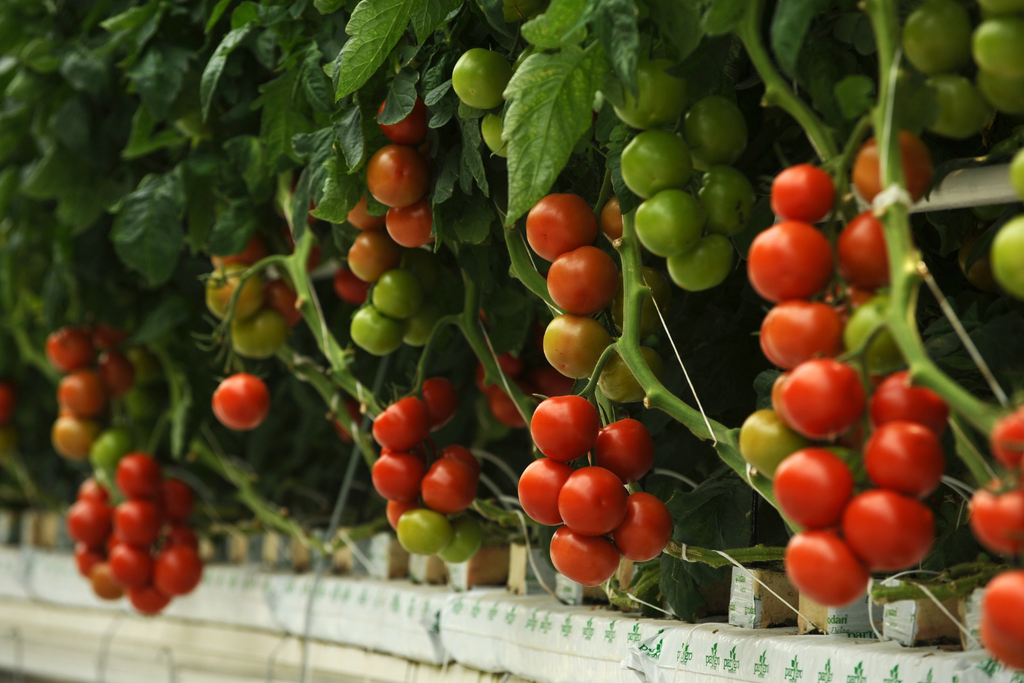
- Choose a Hydroponic System:
- Explore different types of hydroponic systems, such as nutrient film technique (NFT), deep water culture (DWC), or drip irrigation.
- Understand the pros and cons of each system and select the one that suits your space and resources.
- Select a Good Growing Medium:
- Common growing mediums for hydroponic tomatoes include rock wool, coconut coir, or perlite.
- Choose a medium that provides stability, good drainage, and proper aeration for the roots.
- Create a Balanced Nutrient Mix (Fertilizer):
- Understand the essential nutrients required for tomato plants (nitrogen, phosphorus, potassium, calcium, magnesium, etc.).
- Prepare a nutrient solution that meets these requirements and maintains the right balance.
- Choose Suitable Grow Lights:
- Tomatoes need adequate light for photosynthesis.
- Opt for full-spectrum LED grow lights to mimic natural sunlight.
- Install a Trellis System:
- Tomatoes benefit from vertical support.
- Set up a trellis to keep the plants upright and allow proper air circulation.
- Purchase Healthy Seedlings:
- Buy tomato seedlings from reputable sources.
- Look for disease-free, vigorous plants.
- Prepare the Nutrient Solution:
- Mix the nutrient solution according to the recommended ratios.
- Ensure the pH level is within the optimal range (usually 5.5 to 6.5).
- Monitor pH and EC Levels:
- Regularly check the pH (acidity/alkalinity) and electrical conductivity (EC) of the nutrient solution.
- Adjust as needed to maintain optimal conditions for tomato growth.
By following these guidelines and continuously monitoring plant health throughout the growing process, gardeners can achieve successful hydroponic tomato cultivation. With proper care and attention to detail, this innovative method of growing tomatoes can yield bountiful harvests year-round while conserving resources like water and land space.
Selecting the Right Tomato Varieties for Hydroponic Growing
When it comes to selecting the right tomato varieties for hydroponic growing, there are a few key factors that you need to consider. One of the main considerations is the growth habit of the tomato plants. Determinate varieties, which have a more compact growth habit and tend to produce their fruit all at once, are often well-suited for hydroponic cultivation. This is because they require less space and are easier to support with trellis systems.
| Tomato Variety | Advantages | Disadvantages | Characteristics |
|---|---|---|---|
| Sweet 100 | – High yield of small, sweet cherry tomatoes. – Disease-resistant. | – Requires proper pruning to manage vigorous growth. | – Indeterminate growth habit. – Red, round fruits. |
| Sun Gold | – Exceptionally sweet flavor. – Rapid growth and early fruiting. | – Prone to cracking if not harvested promptly. | – Orange-yellow, bite-sized tomatoes. |
| Black Cherry | – Rich, complex flavor. – High yield. | – Requires sturdy support due to heavy fruit clusters. | – Dark purple-black, round fruits. |
| Yellow Pear | – Mild, tangy taste. – Prolific production. | – Delicate skin prone to cracking. | – Small, pear-shaped, yellow tomatoes. |
Remember that choosing the right tomato variety depends on your preferences, available space, and growing conditions. Each of these varieties has unique qualities, so consider what suits your hydroponic system best! 🍅🌱 .
Setting up the Ideal Hydroponic System for Tomato Cultivation
To set up the ideal hydroponic system for tomato cultivation, several key factors need to be taken into consideration. Firstly, the choice of system will depend on the available space and resources. One option is the nutrient film technique (NFT), which involves a shallow stream of nutrient solution flowing continuously over the plant roots.

- Efficient Systems for Small-Scale Setups: Consider implementing a nutrient film technique (NFT) system or a drip irrigation system for small-scale hydroponic tomato cultivation. NFT allows for a continuous flow of nutrient solution along a shallow channel, while drip irrigation delivers water and nutrients directly to each plant through individual drippers.
- Lighting Requirements: Opt for high-intensity discharge (HID) lights like metal halide (MH) and high-pressure sodium (HPS) lamps, or energy-efficient LED lights. HID lights provide the necessary light spectrum and intensity for optimal growth, while LEDs offer energy efficiency and customizable light spectrum.
- Ventilation and Air Circulation: Ensure proper ventilation and air circulation to promote healthy plant growth and prevent disease. Use fans and ventilation systems to maintain optimal temperature and humidity levels and facilitate the exchange of fresh air.
- Choosing the Right Growing Medium: Select a suitable growing medium such as perlite, vermiculite, rockwool, or coco coir. These inert mediums provide good drainage and moisture retention, promoting healthy root development and nutrient absorption.
- Water and Nutrient Management: Implement a reliable water and nutrient management system by monitoring pH and electrical conductivity (EC) levels regularly. Use automated dosing systems to deliver precise amounts of nutrients at specific intervals, ensuring proper nutrient balance and supplementation.
By carefully considering and implementing these factors, growers can establish an ideal hydroponic system for tomato cultivation, providing the optimal conditions for healthy, high-yielding plants.
Having integrated the Milwaukee Instruments MC720 Dosing Pump into my hydroponic setup, I’ve experienced a noticeable improvement in nutrient management. Its precision dosing capabilities have allowed me to maintain optimal nutrient levels, promoting healthy plant growth. However, the setup process was somewhat intricate, requiring careful calibration and programming. Once configured, though, the dosing pump operated reliably, automating the nutrient supplementation process and reducing manual intervention. Overall, the MC720 Dosing Pump has been an invaluable asset in streamlining my hydroponic operation and ensuring consistent plant nutrition.
- Precision Dosing: The Milwaukee Instruments MC720 Dosing Pump likely offers precise and accurate dosing of liquid nutrients or supplements, ensuring consistent plant nutrition.
- Programmable: It may feature programmable settings, allowing users to customize dosing schedules and quantities based on their specific needs and plant requirements.
- Automation: The dosing pump automates the process of adding nutrients to the hydroponic or aquatic system, reducing the need for manual intervention and promoting plant health.
- Versatility: It can be used for various applications, including hydroponic systems, aquariums, and aquaponics setups, providing versatility in nutrient management.
- Reliability: Milwaukee Instruments is known for producing high-quality instruments and equipment, so the MC720 Dosing Pump may offer reliability and durability.
- Complex Setup: Setting up and programming the dosing pump may require some technical knowledge and understanding of dosing requirements, which could be challenging for beginners.
- Maintenance: Regular maintenance, such as cleaning and calibrating the pump, may be necessary to ensure accurate dosing and prevent clogging or malfunction.
- Cost: Automated dosing systems can be expensive upfront, and the Milwaukee Instruments MC720 Dosing Pump may require an initial investment that could be prohibitive for some growers.
- Dependency on Electricity: As an electronic device, the dosing pump relies on electricity to function, so power outages or electrical issues could disrupt dosing schedules and affect plant health.
- Compatibility: The dosing pump may be compatible with specific nutrient solutions or systems, so users should ensure compatibility with their setup before purchasing.
Providing Essential Nutrients for Healthy Tomato Growth
To ensure healthy tomato growth in hydroponic systems, providing the essential nutrients is crucial. Without an adequate supply of nutrients, tomatoes may suffer from nutrient deficiencies, resulting in stunted growth, leaf discoloration, and reduced fruit production. In hydroponic cultivation, where plants are grown in a soil-less medium and receive nutrients through a nutrient solution, it is essential to maintain a balanced and optimized nutrient regimen.

- Primary Macronutrients (NPK):
- Nitrogen (N): Essential for leaf and stem development, chlorophyll production, and overall plant vigor.
- Phosphorus (P): Promotes root growth, flowering, and fruit development.
- Potassium (K): Enhances fruit quality, disease resistance, and water regulation.
- Secondary Macronutrients:
- Calcium (Ca): Crucial for cell wall structure and preventing blossom end rot.
- Magnesium (Mg): Required for chlorophyll synthesis and enzyme activation.
- Sulfur (S): Aids in protein synthesis and overall plant health.
- Commercial Nutrient Solutions:
- Hydroponic growers use formulated nutrient solutions to provide a balanced mix of essential nutrients.
- Regular monitoring and adjustments ensure optimal nutrient availability.
Remember that maintaining the right nutrient balance is essential for healthy hydroponic tomato plants. Happy growing! 🍅🌱 .
In the next paragraph, we will explore the importance of maintaining the appropriate pH levels in hydroponic tomato cultivation.
In addition to providing essential nutrients and maintaining proper pH levels, hydroponic growers must also consider other factors that contribute to healthy tomato growth. These include:
1. Temperature: Tomatoes thrive in temperatures between 70-85°F (21-29°C). Consistent temperature control within this range promotes optimal growth.
2. Light: Tomatoes require at least six hours of direct sunlight each day or an equivalent amount of artificial light. Adequate lighting ensures proper photosynthesis and strong plant development.
3. Watering: Proper watering techniques are crucial in hydroponics systems as overwatering or underwatering can negatively impact tomato plants’ health.
4. Air circulation: Good airflow prevents the buildup of excess humidity, reducing the risk of diseases such as powdery mildew.
5. Pest management: Implementing effective pest control measures helps protect tomatoes from common pests like aphids, whiteflies, and spider mites.
By considering these factors alongside providing essential nutrients and maintaining appropriate pH levels, hydroponic growers can create a favorable environment for healthy tomato growth throughout all stages of cultivation. With careful attention to detail and regular monitoring, growers can maximize yields while producing high-quality tomatoes rich in flavor and nutrition
Managing pH Levels in Hydroponic Tomato Cultivation
Maintaining the proper pH levels is crucial for successful hydroponic tomato cultivation. The pH level refers to the acidity or alkalinity of the nutrient solution in the hydroponic system. Tomatoes thrive in a slightly acidic environment, with a pH range between 5.5 and 6.5.
- Monitoring pH Levels: Utilize a reliable pH meter or test kit to monitor the pH of your hydroponic nutrient solution regularly. This practice helps identify any imbalances promptly and enables timely adjustments to maintain optimal conditions for tomato plants.
- Impact of pH Imbalance: Deviations from the optimal pH range can hinder nutrient uptake by tomato plants, potentially leading to deficiencies or toxicities. Monitoring and adjusting pH levels effectively are crucial for ensuring healthy growth and maximum yield.
- Adjusting pH: Use pH up (alkaline) or pH down (acidic) solutions specifically designed for hydroponic systems to adjust pH levels as needed. Make gradual adjustments and allow time for plants to respond before making further changes.
- Incorporating pH Stabilizers: Consider adding pH stabilizers to your nutrient solution to help maintain a stable pH level over time. This can reduce the frequency of pH adjustments and provide a more consistent environment for your tomato plants to thrive.
By carefully monitoring and managing pH levels in your hydroponic tomato cultivation, you can ensure that the nutrient solution provides an ideal growing environment for your plants. This proactive approach will promote healthy growth, enhance nutrient availability, and maximize the overall productivity of your tomato plants.
Monitoring and Adjusting EC Levels for Optimal Tomato Yield
Maintaining the optimal EC (Electrical Conductivity) levels is vital for maximizing tomato yield in hydroponic systems. EC levels serve as a reliable indicator of the nutrient concentration in the nutrient solution, allowing growers to monitor and adjust accordingly.
- Using an EC Meter: Invest in a reliable EC meter to monitor the electrical conductivity (EC) levels of your hydroponic nutrient solution. Regular measurements should be taken throughout the various stages of tomato growth to ensure accuracy and facilitate timely adjustments.
- Ideal EC Range for Tomatoes: Aim for an EC range between 1.5 and 2.5 mS/cm (millisiemens per centimeter) for optimal tomato growth in hydroponic systems. However, it’s essential to consider factors like growth stage, tomato variety, and environmental conditions, as specific ranges may vary.
- Significance of Monitoring EC: Monitoring EC levels enables growers to assess the nutrient status of the solution and make necessary adjustments for optimal yield. A high EC level may indicate nutrient excess, potentially leading to imbalances and plant stress, while a low EC level may restrict growth and yield potential due to insufficient nutrients.
- Fine-Tuning Nutrient Solution: By regularly monitoring and adjusting EC levels, growers can fine-tune the nutrient solution to provide the ideal balance of nutrients for tomato plants. This practice ensures optimal conditions for growth, leading to healthy plants and a plentiful harvest.
Integrating the HoneForest EC Meter into my hydroponic system has significantly enhanced my gardening experience. With its user-friendly design and precise measurements, I can easily monitor the electrical conductivity of my nutrient solution. This has enabled me to fine-tune the nutrient levels for different plant varieties, ensuring they receive the optimal balance of nutrients for healthy growth. Additionally, the compact size and portability of the meter make it convenient to use, allowing me to take readings at various points in my hydroponic setup with ease.
Moreover, the reliability of the HoneForest EC Meter has given me peace of mind knowing that I can trust its readings. By regularly monitoring the EC levels, I can promptly identify any fluctuations in nutrient concentration and make necessary adjustments to maintain the ideal growing conditions. Overall, the HoneForest EC Meter has become an indispensable tool in my hydroponic gardening journey, empowering me to cultivate thriving plants and achieve consistent yields.
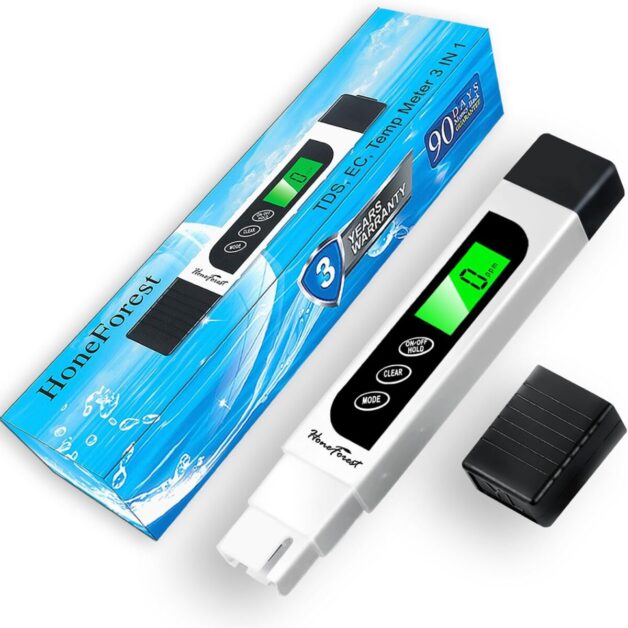
✅ Versatility: These meters can be used in various applications, including hydroponics, aquaponics, aquariums, and water quality testing, offering versatility for different users.
✅ Easy to Use: Many EC meters feature user-friendly designs with simple operation, making them accessible to both beginners and experienced growers.
✅ Compact and Portable: The compact size of EC meters allows for easy transport and use in different locations, providing convenience for on-the-go monitoring.
✅ Long Battery Life: With efficient power management, EC meters often have long battery life, minimizing the need for frequent battery replacements.
❌ Fragility: Some EC meters may be fragile and susceptible to damage if mishandled or dropped, requiring careful handling to prevent breakage.
❌ Limited Functionality: Basic EC meters may only measure electrical conductivity and not offer additional features such as temperature readings or data logging.
❌ Cost: Higher-quality EC meters with advanced features can be expensive, potentially presenting a barrier to entry for some users.
❌ Maintenance: Regular cleaning and maintenance may be necessary to ensure accurate readings and prolong the lifespan of the EC meter, adding to the overall maintenance requirements of a hydroponic system.
Creating the Perfect Growing Conditions for Hydroponic Tomatoes
Creating the perfect growing conditions for hydroponic tomatoes is essential for achieving optimal yields and high-quality fruits. There are several key factors to consider in order to provide the ideal environment for tomato plants to thrive.

- Lighting Requirements: Adequate lighting is essential for hydroponic tomato cultivation, with tomatoes needing 10-12 hours of direct, bright light daily. High-intensity discharge (HID) lights like metal halide (MH) or high-pressure sodium (HPS) lamps provide the necessary intensity for optimal growth. Positioning lights at the right height and angle ensures uniform distribution and maximum coverage.
- Temperature and Humidity Control: Maintaining ideal temperature and humidity levels is crucial for tomato plants’ health. Aim for temperatures between 70-85°F (21-29°C) and relative humidity of 60-80%. Implementing a temperature control system, such as air conditioning or ventilation, helps regulate temperature. Additionally, using a dehumidifier or humidifier can manage humidity levels and prevent fungal diseases, ensuring optimal growing conditions for hydroponic tomatoes.
Choosing the Right Growing Medium for Hydroponic Tomato Plants
When it comes to hydroponic tomato cultivation, choosing the right growing medium is essential for the success of your plants. The growing medium serves as a support system for the roots, allowing them to anchor and access essential nutrients and water. It also plays a crucial role in maintaining proper oxygenation and pH levels.
coco coir

One popular growing medium option for hydroponic tomatoes is coco coir. Made from the fibrous husk of coconuts, coco coir is a sustainable and renewable resource. It has excellent water retention capabilities while still providing adequate drainage, ensuring the roots have access to both moisture and oxygen. Coco coir also has a neutral pH, eliminating the need for constant pH adjustments in your hydroponic system. It is lightweight, easy to handle, and creates an ideal environment for root development.
Rockwool
Another widely used growing medium for hydroponic tomatoes is rockwool. Made from melted rock spun into fibers, rockwool offers excellent water retention and drainage properties. It provides a stable foundation for the roots and allows for optimal air circulation around the root zone. Rockwool also has a neutral pH, making it a suitable choice for maintaining proper pH levels in your hydroponic system. However, it is essential to handle rockwool with care, as the fibers can be irritating to the skin and lungs.
With the right growing medium, you can provide your hydroponic tomato plants with the ideal conditions for healthy growth and maximum yield. Whether you opt for coco coir or rockwool, ensure that you follow the manufacturer’s guidelines for preparation and use. Establishing a solid foundation with the proper growing medium sets the stage for successful hydroponic tomato cultivation.
Ensuring Sufficient Lighting for Tomato Plants in Hydroponic Systems
Proper lighting is crucial for the healthy growth and development of tomato plants in hydroponic systems. Since these plants rely solely on artificial light, it is essential to ensure that they receive the correct intensity and spectrum of light for efficient photosynthesis and fruit production.

Choose LED grow lights that emit a balanced combination of red and blue wavelengths.
Red (around 660 nm) and blue (around 450 nm) light are essential for photosynthesis and overall plant health.
Tomato plants need 12-16 hours of light per day.
Position grow lights 12-18 inches above the tomato canopy to ensure even coverage.
Monitor light intensity using a light meter (600-1000 µmol/m²/s is ideal).
Maintain a consistent light-dark cycle.
Follow a 16-hour light period followed by an 8-hour dark period to mimic natural daylight.
By prioritizing the correct lighting requirements for tomato plants in your hydroponic system, you can ensure optimal growth, increased yields, and flavorful fruits. Next, we will delve into the importance of implementing proper ventilation and air circulation in hydroponic tomato gardens.
Implementing Proper Ventilation and Air Circulation in Hydroponic Tomato Gardens
Proper ventilation and air circulation are essential factors to consider in hydroponic tomato gardens. Adequate airflow can help in preventing the buildup of humidity and stagnant air, which can lead to the development of diseases and detrimental effects on plant growth.

- Regulating Temperature: Good air movement in hydroponic systems helps regulate temperature, preventing excessive heat buildup around tomato plants. Optimal temperatures range from 70-85°F (21-29°C) during the day and slightly cooler at night. Stagnant hot air can stress plants and impede growth and fruit production.
- Assisting Transpiration: Proper air circulation aids in transpiration, the process through which plants release excess moisture through their leaves. This process maintains a balanced water and nutrient uptake, supporting optimal growth. Inadequate airflow can lead to high humidity levels, increasing the risk of fungal diseases like powdery mildew or botrytis.
- Ventilation Strategies: To ensure sufficient air movement in your hydroponic tomato garden, strategically place fans within the grow area to circulate air and prevent stagnant pockets. Aim for at least one fan per 100 square feet of growing space. Position exhaust fans near the top to expel warm air, while intake vents or ducting can introduce fresh air, promoting healthier plant growth and minimizing disease risk.
In conclusion, implementing proper ventilation and air circulation in your hydroponic tomato garden is crucial to maintain optimal growing conditions. Adequate airflow helps regulate temperature, prevent the buildup of humidity, and promotes transpiration, all of which contribute to healthy plant growth and bountiful harvests. By incorporating ventilation systems and fans, you can create a favorable environment for your hydroponic tomatoes to thrive.
Preventing and Managing Common Pests and Diseases in Hydroponic Tomato Cultivation
When it comes to hydroponic tomato cultivation, preventing and managing common pests and diseases is essential for ensuring a bountiful harvest. While hydroponic systems can provide a controlled environment that minimizes the risk of pests and diseases, it’s still important to implement proactive measures to protect your tomato plants.
| Issue | Symptoms | Treatment | Effects on Plants |
|---|---|---|---|
| Pests | |||
| Spider Mites | – Fine webbing on leaves. – Yellowing and stippling of leaves. | – Use insecticidal soap or neem oil. – Introduce predatory mites. | Reduced photosynthesis and plant vigor. |
| Whiteflies | – Tiny white insects on the undersides of leaves. – Yellowing leaves. | – Use yellow sticky traps. – Release parasitic wasps. | Weakened plant growth and yield. |
| Aphids | – Clusters of small, soft-bodied insects on new growth. – Sticky honeydew residue. | – Spray with water to dislodge aphids. – Apply insecticidal soap. | Distorted leaves and reduced nutrient uptake. |
| Root Rot | – Wilting, yellowing, and stunted growth. – Foul odor from roots. | – Improve drainage. – Use hydrogen peroxide solution. – Replace infected growing medium. | Root damage and plant decline. |
| Temperature Fluctuations | – Leaf curling, wilting, or yellowing. – Reduced fruit set. | – Maintain consistent temperature. – Use shade cloth during extreme heat. | Impact on overall plant health and yield. |
| Lighting Issues | – Leggy growth, pale leaves. – Poor fruit development. | – Adjust light intensity and duration. – Use full-spectrum LED grow lights. | Reduced photosynthesis and yield. |
| Water Quality Problems | – Brown leaf edges, leaf tip burn. – Poor nutrient uptake. | – Use filtered or dechlorinated water. – Monitor EC levels. | Nutrient imbalances and stressed plants. |
| Stress Factors | – Drooping leaves, slowed growth. – Reduced flowering. | – Maintain optimal conditions (light, temperature, humidity). – Avoid sudden changes. | Lowered overall plant performance. |
| Pollination Issues | – Poor fruit set. – Blossom drop. | – Gently shake plants to aid self-pollination. – Introduce bumblebees or hand-pollinate. | Reduced fruit yield and quality. |
Remember to monitor your hydroponic tomato plants regularly and take swift action to address any issues.
Pruning and Training Techniques for Maximum Tomato Production
When it comes to maximizing tomato production in a hydroponic system, the right pruning and training techniques can make all the difference.

- Pruning for Optimal Growth: Pruning tomato plants involves removing unwanted foliage and suckers to redirect energy towards fruit production. This practice enhances air circulation and light penetration, reducing disease risks and promoting healthy growth. Careful pruning is essential to avoid stressing the plants.
- Training Techniques: Tomato plants can be trained using methods like tomato staking or tomato caging. Tomato staking involves supporting plants vertically with stakes or trellises, preventing sprawling and minimizing pest and disease risks. Tomato caging employs wire cages to provide support while allowing plants to grow freely. The choice between methods depends on gardener preferences and specific requirements.
Overall, proper pruning and training techniques play a crucial role in maximizing tomato production in a hydroponic system. These techniques not only help to maintain plant health but also promote better fruit development and overall yield. By implementing these practices correctly and consistently, gardening enthusiasts can enjoy a bountiful harvest of flavorful and healthy hydroponic tomatoes.
Maintaining Proper Watering and Irrigation in Hydroponic Tomato Systems
Proper watering and irrigation are crucial elements for successful hydroponic tomato cultivation. As water is the medium through which nutrients are delivered to the plants, maintaining the right moisture levels is vital for optimal growth and fruit production.
- Consistent and Even Watering:
- Ensure water distribution is uniform throughout the growing medium.
- Uneven watering can lead to inconsistent nutrient uptake and poor growth.
- Well-Designed Irrigation System:
- Set up an efficient irrigation system to evenly deliver water to all plants.
- Consider drip systems, NFT (nutrient film technique), or DWC (deep water culture).
- Monitor and Adjust:
- Regularly check moisture levels in the growing medium.
- Factors like temperature, humidity, and growth stage affect water requirements.
- Adjust the watering schedule accordingly.
- Avoid Overwatering:
- Slightly underwatering is preferable to overwatering.
- Excessive moisture can lead to root rot and fungal diseases.
By paying attention to proper watering and irrigation techniques, hydroponic tomato growers can ensure that their plants are receiving the right amount of water and nutrients, leading to healthy plants and a bountiful harvest. For more detailed guidelines on watering hydroponic tomato systems, refer to reliable sources or consult with experts in the field.
Pollination Methods for Hydroponic Tomato Plants
Pollination is a critical process in the cultivation of hydroponic tomato plants, as it directly affects the formation of fruits. Unlike traditional soil-based cultivation, hydroponic systems typically lack natural pollinators such as bees. Therefore, hydroponic gardeners need to employ manual pollination methods to ensure a successful fruit set.

- Electric Toothbrush or Pollination Wand: Gently vibrate tomato flowers to simulate bee buzzing and release pollen.
- Timing is Key: Perform pollination during the flowering stage, preferably early in the morning when pollen viability is high.
- Handle with Care: Take precautions to avoid damaging the delicate flower structure or hindering plant growth.
- Precise Pollination: Utilize a small paintbrush for varieties with tightly clustered flowers for more controlled pollination.
- Transfer Pollen: Move the brush gently from flower to flower, transferring pollen grains onto the stigma, the female reproductive part.
- Maintain Cleanliness: Use a clean brush for each plant to prevent the potential spread of pests or diseases.
By employing these manual pollination methods, hydroponic gardeners can ensure that their tomato plants efficiently set fruit and achieve optimal yields. This proactive approach to pollination enables growers to fully harness the potential of hydroponic systems, creating a productive and rewarding gardening experience.
Harvesting and Storing Hydroponic Tomatoes for Optimal Flavor and Shelf Life
To ensure optimal flavor and extended shelf life, harvesting and storing hydroponic tomatoes require careful attention to detail. Harvesting should be done when the tomatoes are fully ripe, but not overripe, as this will yield the best flavor. It is important to note that tomatoes continue to ripen even after they have been harvested, so picking them slightly underripe can be beneficial to prevent mushiness during transportation and storage.
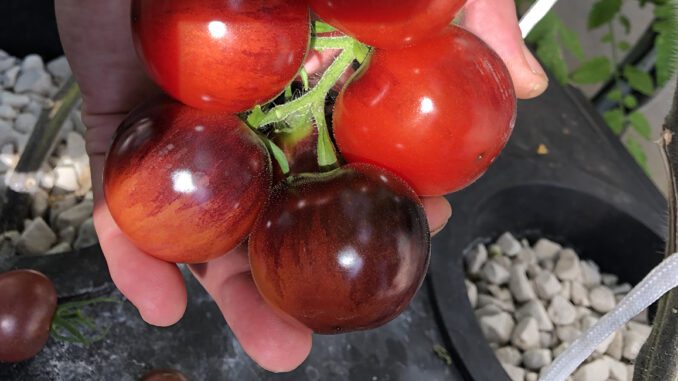
Gently twist or cut the stem just above the calyx to avoid damaging the fruit.
Inspect each tomato, discarding any diseased or damaged ones to prevent the spread of pathogens.
Handle tomatoes carefully to minimize bruising.
Store hydroponic tomatoes at room temperature.
Place them in a single layer to avoid excessive pressure and bruising.
Keep tomatoes away from direct sunlight to prevent accelerated ripening and spoilage.
Store tomatoes separately from other ethylene-producing fruits.
Refrigerate fully ripe tomatoes only if needed for a short duration.
Allow refrigerated tomatoes to come to room temperature before consuming to restore flavor.
By adhering to these guidelines for harvesting and storing hydroponic tomatoes, you can maximize their flavor and prolong their shelf life, ensuring a delightful culinary experience with each bite.
Troubleshooting Common Issues in Hydroponic Tomato Growing
nutrient deficiencies
One of the most common issues that hydroponic tomato growers may encounter is nutrient deficiencies. Since hydroponic systems rely on nutrient solutions to provide essential elements to the plants, it is important to ensure that the nutrient solution is properly balanced. Insufficient levels of nutrients, such as nitrogen, phosphorus, or potassium, can lead to stunted growth, yellowing leaves, or poor fruit production.
On the other hand, excessive nutrient levels can cause nutrient burn, leaf tip necrosis, or even plant death. Therefore, it is crucial to monitor the nutrient solution regularly and adjust the nutrient levels according to the plant’s needs. Conducting regular water and nutrient tests can help identify any deficiencies or imbalances and allow for prompt corrective actions.
improper pH levels
Another issue that hydroponic tomato growers may face is improper pH levels. pH is a measure of the acidity or alkalinity of the nutrient solution, and it plays a crucial role in nutrient availability to the plants. Tomatoes prefer a slightly acidic pH range of 5.8 to 6.5. If the pH deviates from this range, it can affect the nutrient uptake and lead to nutrient deficiencies, even if the nutrients are present in the solution.
To maintain the optimal pH level, it is important to test the pH of the nutrient solution regularly and make necessary adjustments using pH adjustment solutions or additives. Monitoring and maintaining the pH levels within the desired range will help ensure that the tomatoes receive the appropriate nutrients and can thrive in the hydroponic system.
Troubleshooting Common Issues in Hydroponic Tomato Growing
| Issue | Possible Causes | Solutions |
|---|---|---|
| 1. Yellowing Leaves | – Nutrient Deficiency: Lack of essential nutrients. | – Adjust nutrient solution based on plant requirements. |
| – pH Imbalance: Incorrect pH affecting nutrient uptake. | – Check and adjust pH levels within the optimal range. | |
| – Overwatering or Underwatering: Inconsistent watering. | – Ensure a consistent and appropriate watering schedule. | |
| 2. Leaf Curling | – Overwatering or Underwatering: Uneven moisture levels. | – Implement a consistent watering routine. |
| – High Temperature: Excessive heat stress on the plant. | – Provide shade or adjust environmental conditions. | |
| – Pests or Diseases: Infestation or infection. | – Inspect plants regularly and apply appropriate treatments. | |
| 3. Slow Growth | – Inadequate Light: Insufficient or improper lighting. | – Adjust light intensity and duration for optimal growth. |
| – Nutrient Imbalance: Lack or excess of specific nutrients. | – Adjust nutrient solution according to plant needs. | |
| – Temperature Extremes: Too hot or too cold conditions. | – Maintain an optimal temperature range for tomatoes. | |
| 4. Blossom End Rot | – Calcium Deficiency: Insufficient calcium uptake. | – Ensure adequate calcium in the nutrient solution. |
| – Inconsistent Watering: Fluctuating moisture levels. | – Maintain consistent and adequate watering practices. | |
| – pH Fluctuations: pH affecting calcium availability. | – Stabilize pH levels within the recommended range. | |
| 5. Wilting | – Root Issues: Root rot, diseases, or poor aeration. | – Inspect roots, ensure proper aeration, and treat diseases. |
| – Watering Problems: Overwatering or underwatering. | – Adjust watering practices based on plant needs. | |
| – Temperature Stress: Extreme temperatures. | – Provide proper temperature control and shading. | |
| 6. Flower Drop Without Fruit Setting | – Poor Pollination: Lack of pollinators or airflow. | – Introduce pollinators or manually assist in pollination. |
| – Nutrient Imbalance: Inadequate phosphorus or potassium. | – Adjust nutrient solution for improved flower setting. | |
| – Environmental Stress: High temperatures or humidity. | – Control environmental factors for optimal conditions. |
Note: Regular monitoring, prompt intervention, and adjustments based on specific conditions are crucial for addressing and preventing issues in hydroponic tomato growing.
By addressing these common issues in hydroponic tomato growing, growers can ensure that their plants receive the necessary nutrients for healthy growth and abundant fruit production. Regular monitoring of the nutrient solution’s balance and pH level will help prevent any potential problems before they become severe. Troubleshooting these issues promptly will result in thriving tomato plants in a hydroponic system.
Scaling up Hydroponic Tomato Cultivation for Commercial Production
Scaling up hydroponic tomato cultivation for commercial production requires careful planning and implementation. As the demand for fresh, high-quality tomatoes continues to rise, hydroponic systems offer an efficient and sustainable solution for meeting market needs. However, transitioning from small-scale production to a larger commercial operation comes with its own set of challenges and considerations.
- Assessing Scalability: Before expanding your hydroponic setup, assess factors like space, infrastructure, and finances. Develop a detailed business plan and conduct a feasibility study to gauge viability. Seek advice from industry experts for practical insights.
- Optimizing Yield and Efficiency: Enhance productivity by incorporating advanced technologies and automation systems. Streamline processes, manage resources efficiently, and invest in high-quality equipment. Select disease-resistant cultivars with longer shelf life to maximize harvest quantity and quality.
- Maintaining Quality and Safety: Ensure consistent product quality and adhere to food safety standards. Monitor nutrient levels, pH, and EC regularly to prevent imbalances. Implement sanitation protocols and integrated pest management to mitigate contamination risks.
- Transitioning to Commercial Scale: Scaling up requires meticulous planning and adherence to best practices. Despite challenges, with dedication and industry knowledge, commercial hydroponic tomato cultivation can thrive, meeting the demand for fresh, locally-grown produce sustainably.
Watch video for more information:
FAQ
What is hydroponic tomato cultivation?
Hydroponic tomato cultivation is a method of growing tomatoes without soil, using nutrient-rich water solutions instead.
Why is hydroponic tomato cultivation considered advantageous for commercial production?
Hydroponic tomato cultivation offers several advantages for commercial production, including higher yields, faster growth rates, better control over nutrient delivery, and reduced water usage.
How do I choose the right tomato varieties for hydroponic growing?
When selecting tomato varieties for hydroponic cultivation, look for traits such as disease resistance, compact growth habits, and high yield potential. Varieties specifically bred for greenhouse or hydroponic production are often a good choice.
What is the ideal hydroponic system for tomato cultivation?
The ideal hydroponic system for tomato cultivation depends on factors such as available space, budget, and desired level of automation. Options include nutrient film technique (NFT), drip irrigation, and deep water culture (DWC).
What are essential nutrients for healthy tomato growth in hydroponic systems?
Essential nutrients for hydroponic tomato growth include nitrogen, phosphorus, potassium, calcium, magnesium, and various trace elements. These can be provided through nutrient solutions specifically formulated for tomatoes.
How do I manage pH levels in hydroponic tomato cultivation?
pH levels in hydroponic tomato cultivation should be maintained between 5.5 and 6.5. Regular monitoring and adjustment of pH can be done using pH meters and pH adjusters such as pH up or pH down solutions.
What does EC level refer to in hydroponic tomato cultivation?
EC level, or electrical conductivity level, refers to the measure of nutrient concentration in the hydroponic solution. Monitoring and adjusting EC levels is crucial for ensuring optimal tomato yield and avoiding nutrient imbalances.
How do I create the perfect growing conditions for hydroponic tomatoes?
The perfect growing conditions for hydroponic tomatoes include providing appropriate temperature, humidity, and ventilation, as well as maintaining proper lighting and nutrient levels.
What is the ideal growing medium for hydroponic tomato plants?
Common growing mediums for hydroponic tomato plants include coconut coir, perlite, vermiculite, and rockwool. The choice depends on factors such as water retention, aeration, and pH stability.
How do I ensure sufficient lighting for tomato plants in hydroponic systems?
Sufficient lighting for tomato plants in hydroponic systems can be achieved through the use of artificial lighting, such as high-intensity discharge (HID) lamps or light-emitting diode (LED) lights. The lighting should provide the necessary spectrum and intensity for optimal growth.
How can I prevent and manage common pests and diseases in hydroponic tomato cultivation?
Prevention and management of pests and diseases in hydroponic tomato cultivation involve practices such as maintaining proper sanitation, using biological controls, implementing integrated pest management strategies, and regularly inspecting plants for signs of infestation or disease.
What pruning and training techniques maximize tomato production in hydroponic systems?
Pruning and training techniques such as removing suckers, staking or trellising, and using pruning shears can help maximize tomato production in hydroponic systems by improving airflow, reducing disease risks, and directing energy toward fruit production.
How should I maintain proper watering and irrigation in hydroponic tomato systems?
Proper watering and irrigation in hydroponic tomato systems involve regular monitoring of water levels and ensuring a consistent supply of nutrient-rich solution. Techniques such as drip irrigation or automated systems can be used.
How can I pollinate hydroponic tomato plants?
Hydroponic tomato plants can be pollinated manually by gently shaking the plants or using a small brush to transfer pollen between flowers. Alternatively, introducing bees or using artificial pollination methods can be employed.
What are the best harvesting and storing practices for hydroponic tomatoes
Harvest hydroponic tomatoes when they are fully ripe, red, and firm. Store them at temperatures around 55°F (13°C) with moderate humidity to maintain optimal flavor and shelf life.
What are some common issues that may arise in hydroponic tomato growing, and how can they be resolved?
Some common issues in hydroponic tomato growing include nutrient deficiencies, pH imbalances, pest infestations, and diseases. These can be resolved by adjusting nutrient solutions, maintaining proper pH levels, implementing pest management techniques, and using appropriate disease control measures.
How can hydroponic tomato cultivation be scaled up for commercial production?
Scaling up hydroponic tomato cultivation for commercial production involves factors such as expanding production space, investing in larger hydroponic systems, streamlining processes, and ensuring a reliable supply chain for distribution and sales.

Studied Agricultural Engineering-Plant Protection at University of California, Davis.
Head of Content writing team at Southelmontehydroponics.com

